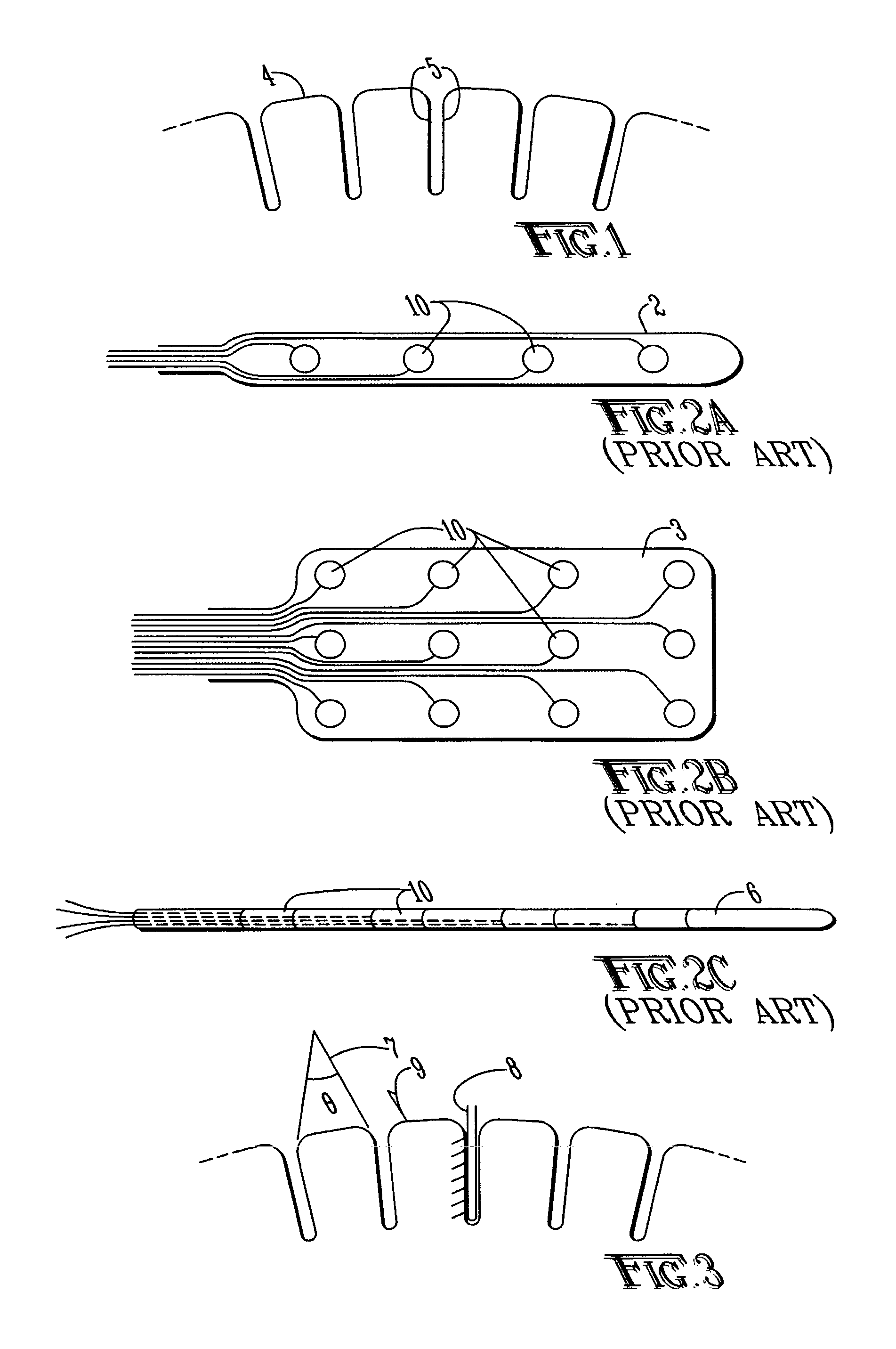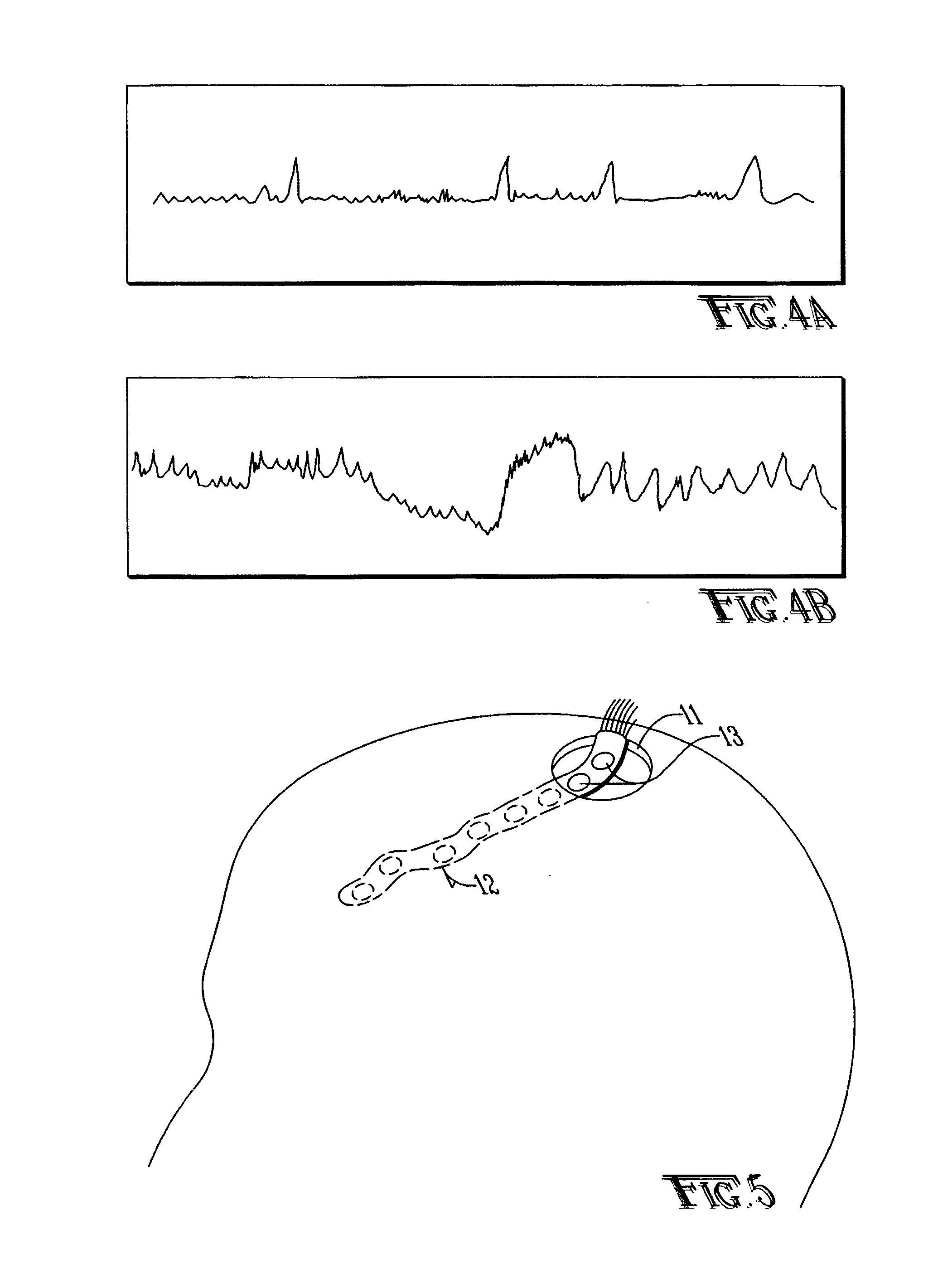Unitized electrode with three-dimensional multi-site, multi-modal capabilities for detection and control of brain state changes
a brain state and multi-site technology, applied in the field of medical devices, can solve the problems of poor spatial resolution, electrodes/devices not currently available, and current methodology, and achieve the effects of improving recording and control purposes, increasing the information content of signals, and reducing nois
- Summary
- Abstract
- Description
- Claims
- Application Information
AI Technical Summary
Benefits of technology
Problems solved by technology
Method used
Image
Examples
first modified embodiment
[0059]the unitized electrode with three-dimensional capabilities for detection and control of brain state changes, designated by the numeral 60, is depicted in FIG. 7. The first modified embodiment 60 includes a hollow body mechanism 61 having one or more retractable electrode devices 62 with distal ends 63 that can be selectively pushed out into the cortex, wherein the body mechanism 61 is secured to a disk portion 64 similar to that hereinbefore described for electrode 20. Disk portion 64 provides supporting and stabilizing structure for the first modified embodiment 60 but can also have one or more recording and stimulating contact surfaces on a lower surface 65 thereof, as hereinbefore described. While the body mechanism 61 is being inserted into a fold of the gyrus, as indicated in FIG. 7, the distal ends 63 of the retractable electrode devices 62 are retained within the body mechanism 61. Once the body mechanism 61 is suitably placed inter-gyrally as desired, i.e., in between ...
third modified embodiment
[0064]the unitized electrode with three-dimensional capabilities for detection and control of brain state changes, designated by the numeral 92 is shown, in FIG. 9. The third modified embodiment 92 includes a plate portion 93 and a plurality of shaft portions 94. As hereinbefore described, each shaft portion 94 may have a plurality of recording and / or stimulating electrode surfaces 95 separated by insulating material 96, as indicated on only one of the shaft portions 94 for simplification of illustration. Each of the recording and / or stimulating electrode surfaces 95 is independently connected to a different one of the conductors 97. In addition, the lower surface 98 of the plate portion 93 may have a single recording and / or stimulating contact surface connected in communication with a separate one of the conductors 97. Application of the third modified embodiment is substantially similar to that indicated in FIG. 6C for electrode 50. The multiple shaft portions 94 allow a further i...
PUM
 Login to View More
Login to View More Abstract
Description
Claims
Application Information
 Login to View More
Login to View More - R&D
- Intellectual Property
- Life Sciences
- Materials
- Tech Scout
- Unparalleled Data Quality
- Higher Quality Content
- 60% Fewer Hallucinations
Browse by: Latest US Patents, China's latest patents, Technical Efficacy Thesaurus, Application Domain, Technology Topic, Popular Technical Reports.
© 2025 PatSnap. All rights reserved.Legal|Privacy policy|Modern Slavery Act Transparency Statement|Sitemap|About US| Contact US: help@patsnap.com



